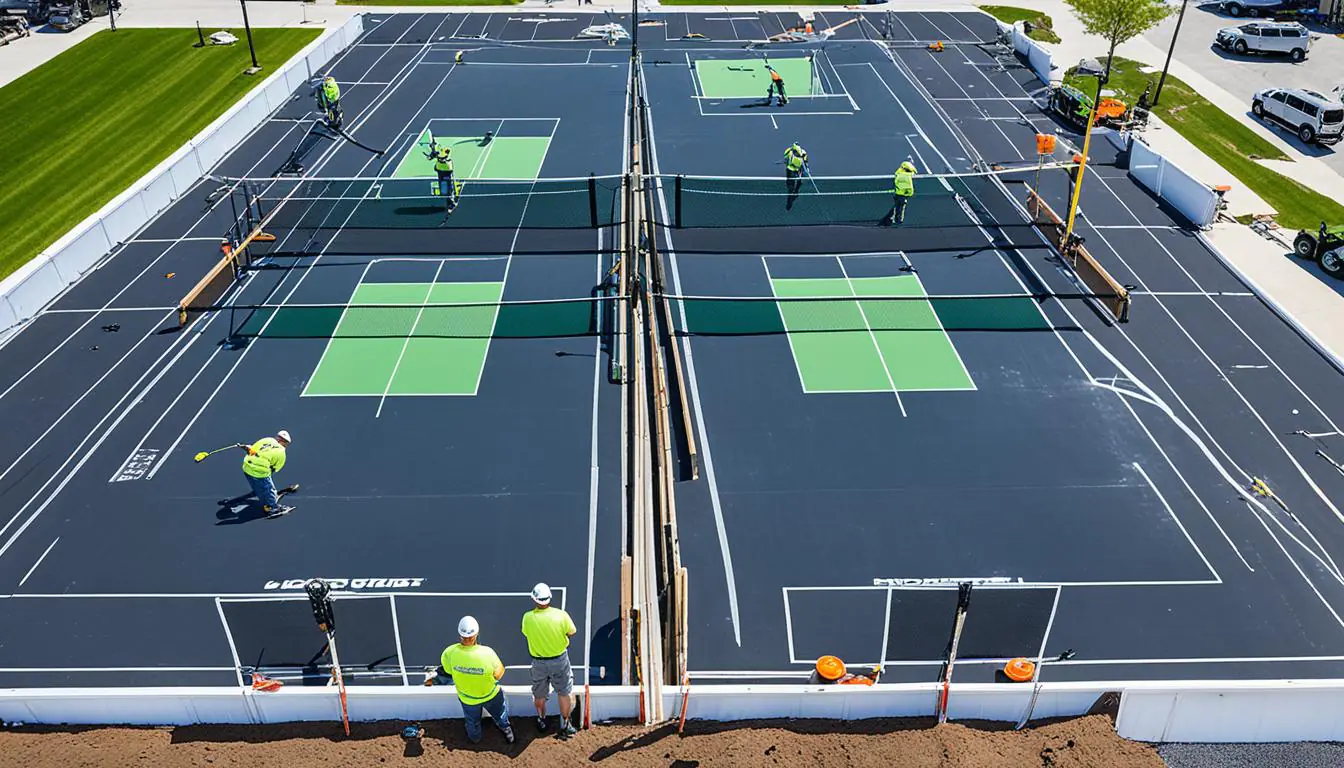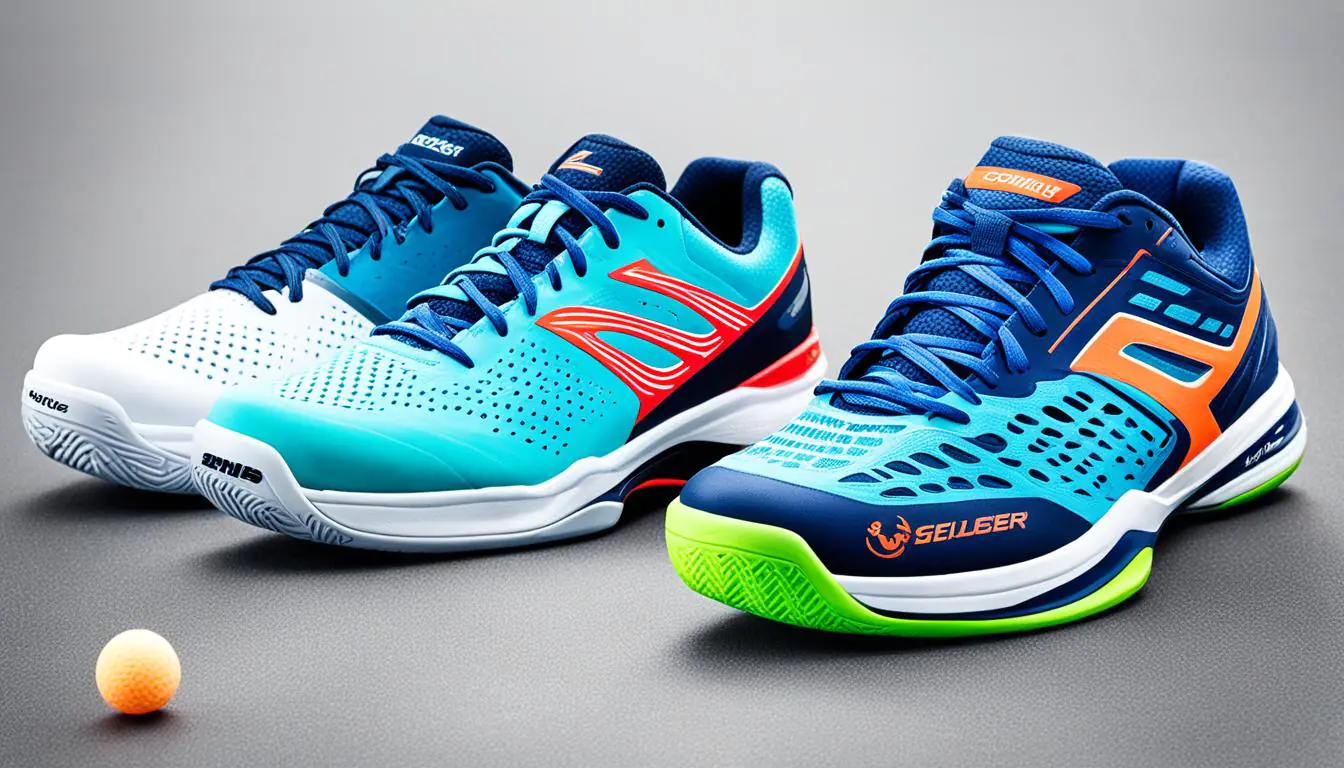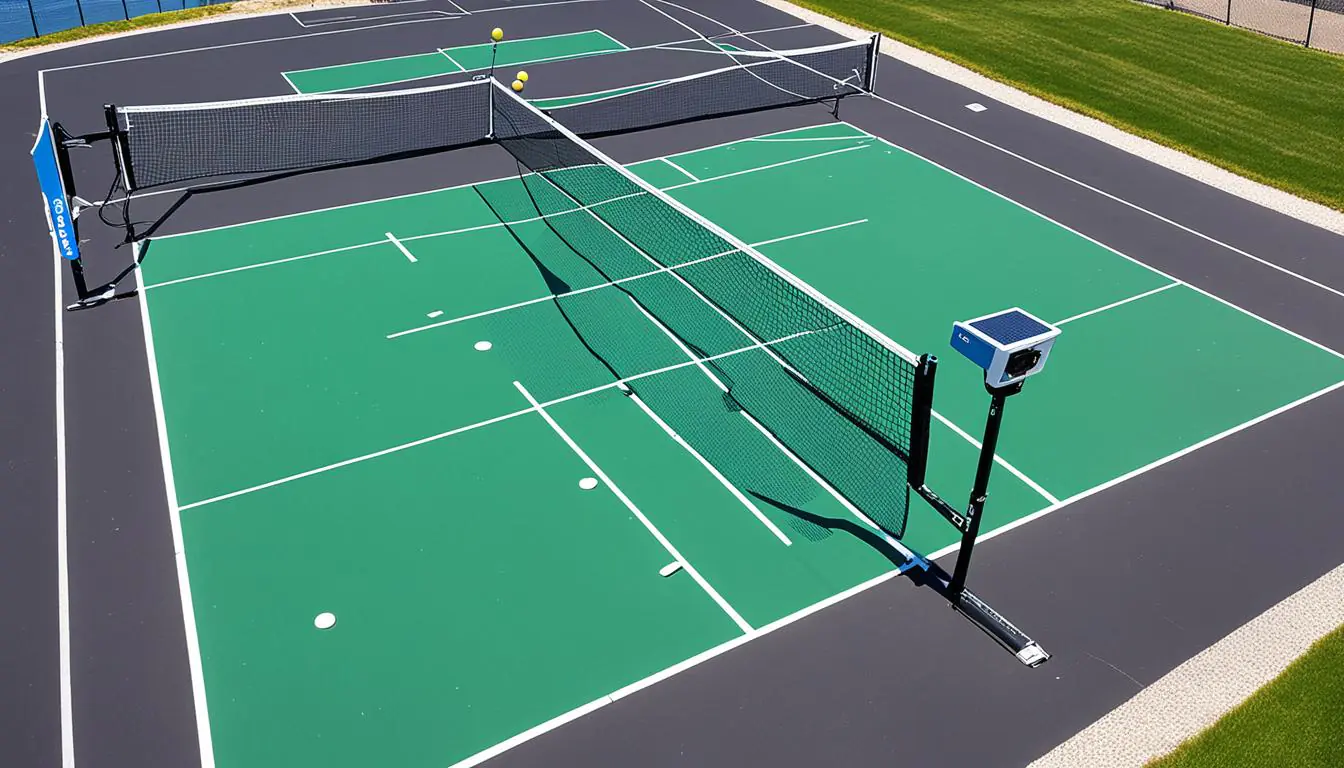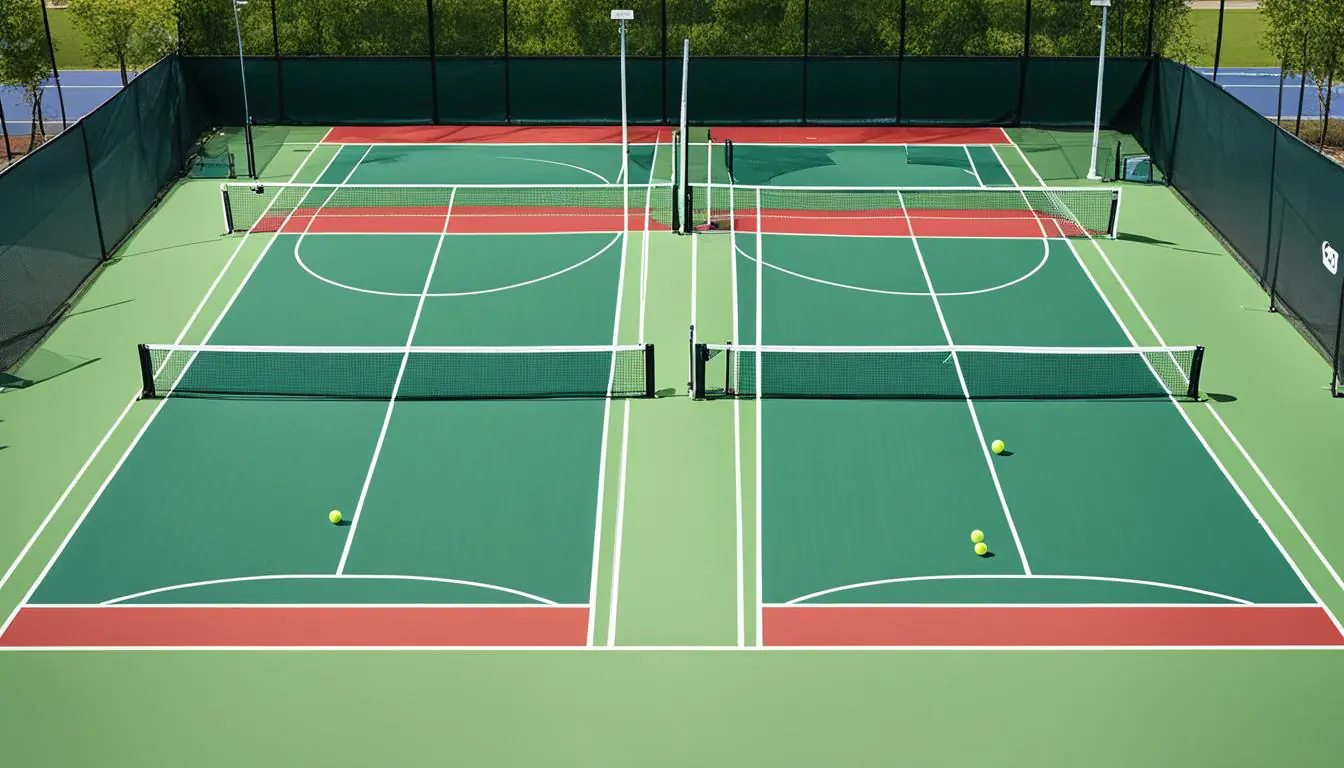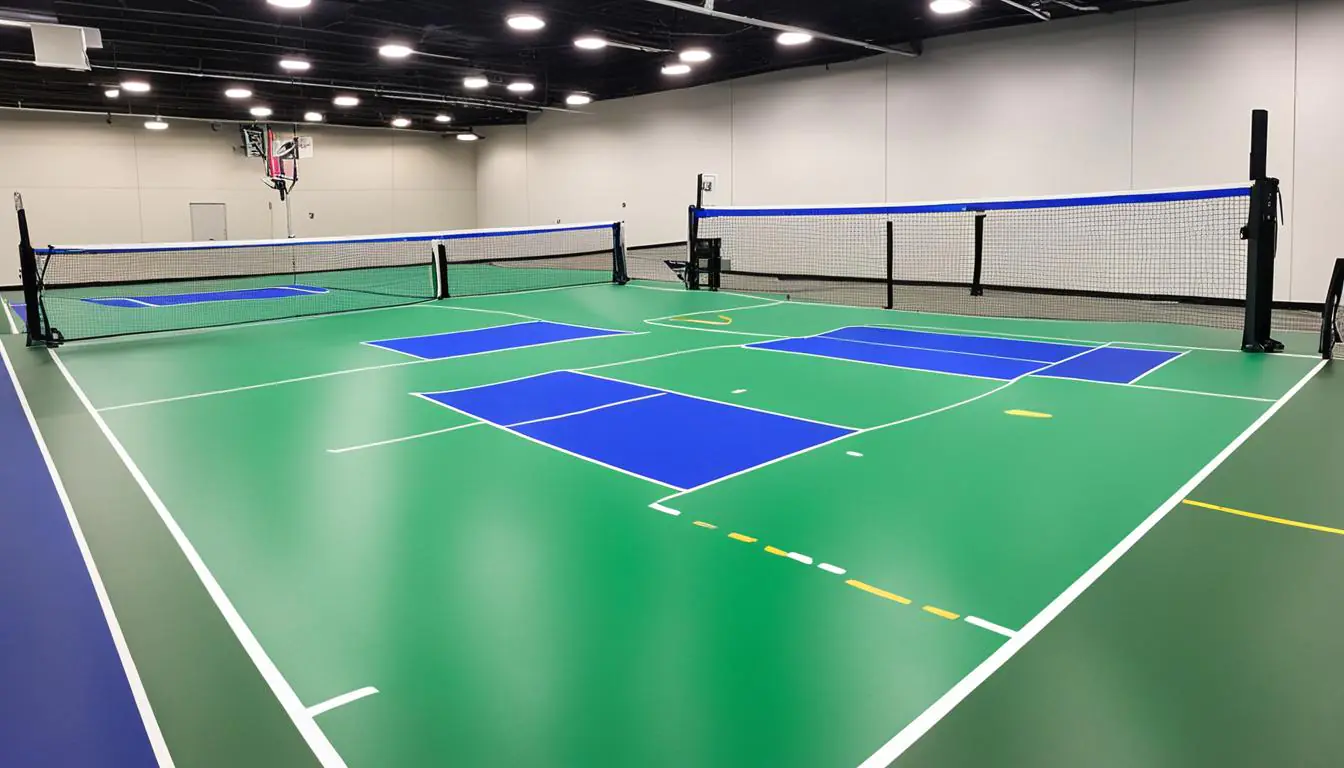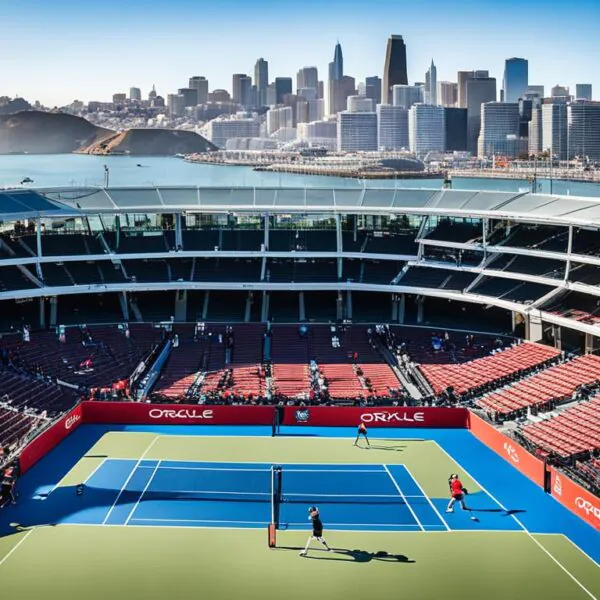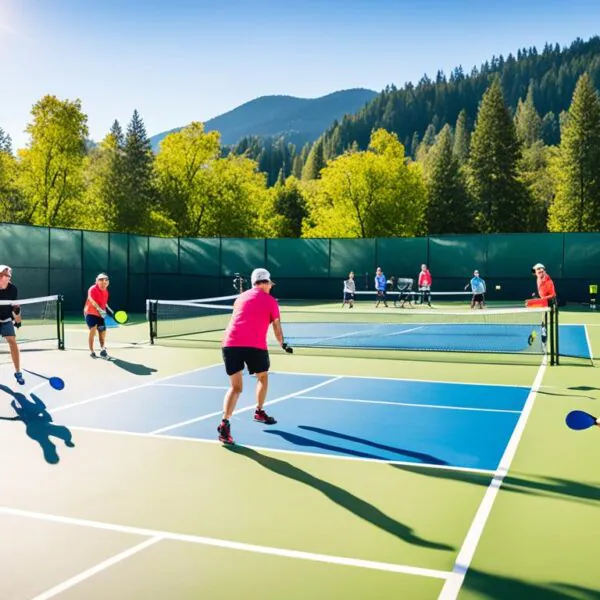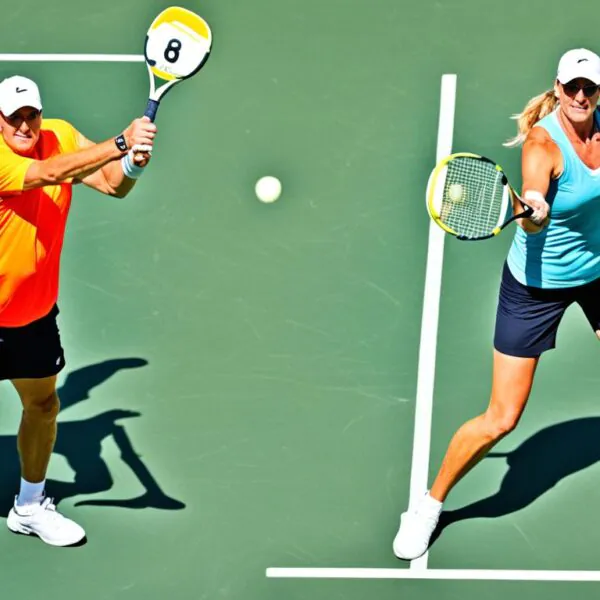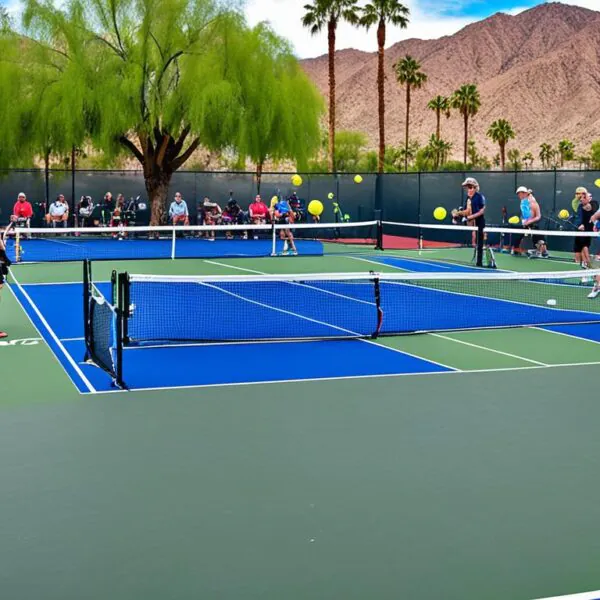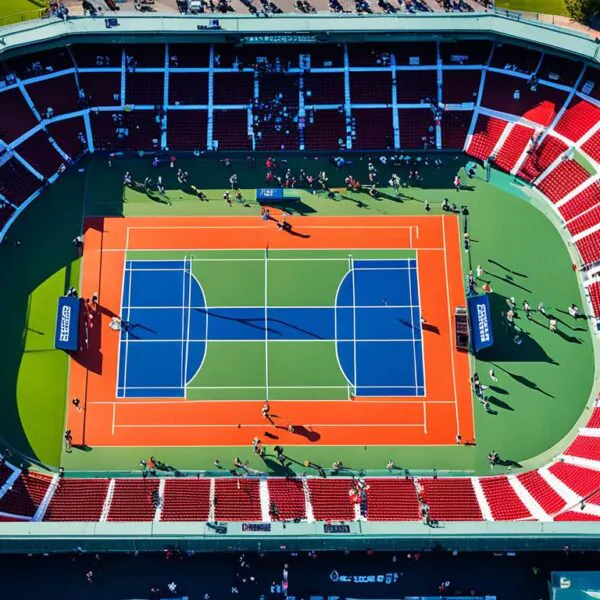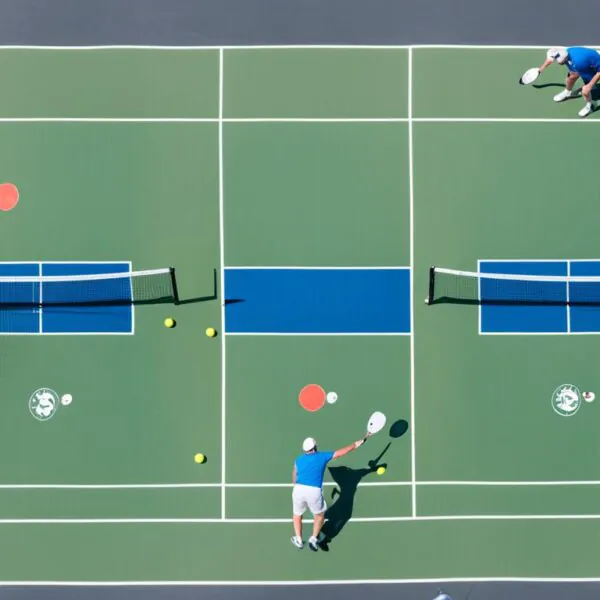Pickleball is growing fast in the U.S., with 8.9 million players in 2022. This is almost three times more than four years ago! Many people want to add their own pickleball courts, either at home or in an outdoor sports area. It’s important to plan well to make a top-quality court that follows USA Pickleball Association rules.
This guide will give you key tips on pickleball court construction. We’ll cover official court sizes, choosing the right materials, and the best layout. Knowing how to build a court will make your space better for playing. Let’s explore the main steps to build a great pickleball court!
Key Takeaways
- Understanding the official dimensions is critical: 20 by 44 feet for court size.
- Budgeting appropriately ensures you can cover all construction aspects.
- Choosing the right surface material impacts playability and maintenance.
- Proper drainage is essential in site preparation.
- Always consider lighting and fencing for functionality.
Understanding Pickleball Court Dimensions
Building a pickleball court needs the right dimensions for fun and fair play. The official size is 20 feet by 44 feet for singles and doubles. The net stands at 36 inches on the sides and 34 inches in the middle.
Official Dimensions for Singles and Doubles Play
Following the right court size is key for singles and doubles games. It gives players enough room to move and makes the game fair. These rules help make the game better and grow its community.
Last year, over 1,000 new places to play pickleball opened in the U.S. This shows how popular the sport is getting.
Importance of Space for Tournament Play
For big games, you need more space. The smallest area needed is 30 feet by 60 feet. But, 34 feet by 64 feet is better for games and watching.
This extra space makes games more fun for players and fans. Pickleball is getting more popular, with more people joining USA Pickleball. Knowing about court size is important for building your own court.
Site Selection and Preparation
Choosing the right spot for a pickleball court is key. You need to check the ground conditions for a strong base. A flat area with good drainage in court construction stops water from making the court bad.
Identifying Ideal Ground Conditions
The ground must be right for the court’s materials, like asphalt or concrete. You must level and pack the ground well. If not, the court might be uneven or have bad drainage.
So, I make sure the area is clean and graded right to keep rainwater away from the court.
Importance of Proper Drainage
Good drainage in court construction is crucial. A slight slope away from the court helps water flow right. Without it, the court could get damaged and cost a lot to fix.
Getting expert advice on grading helps keep the court good for playing. Doing things right means the court stays playable in any weather.
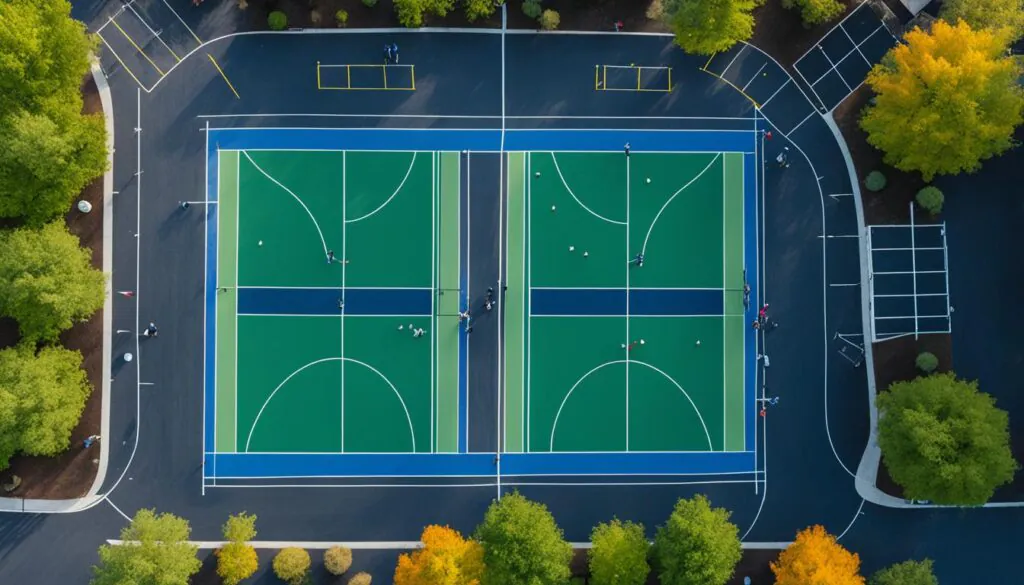
Surface Material Selection
Choosing the right surface for a pickleball court is key for good play and upkeep. You can pick from asphalt, concrete, or plastic tiles. Each has its own pros and cons that affect the game and how easy it is to keep the court up.
Comparison of Asphalt, Concrete, and Plastic Tiles
Asphalt is a top choice for outdoor courts because it’s tough and doesn’t cost a lot. It’s also softer than hard surfaces, which is easier on players’ joints. Concrete is similar but can be harder on players. Plastic tiles look nice but are more expensive.
- Cushioning: Asphalt absorbs shock well, but concrete is harder.
- Cost: Asphalt is cheaper than plastic tiles.
- Aesthetics: Plastic tiles come in many designs to make the court look better.
Durability and Maintenance Considerations
How often you need to maintain a pickleball court depends on the surface. Asphalt needs regular care to stay in good shape. Concrete is easy to keep up but can be hard on players’ joints. Plastic tiles need replacing now and then but are easy to clean and dry fast.
It’s a good idea to resurface the court every five years. Think about the weather where you live too. The surface you choose can affect how the game plays out.
| Material | Durability | Maintenance Level | Cost |
|---|---|---|---|
| Asphalt | High | Moderate | Low |
| Concrete | High | Low | Moderate |
| Plastic Tiles | Moderate | High | High |
When choosing a surface, think about how often you’ll use it, your budget, and what you like. This way, you’ll get a court that’s both fun and functional.
Designing Your Pickleball Court Layout
Creating a pickleball court needs careful planning. You must know the exact size and features of the court. It’s key to place the court lines right for good gameplay. This makes sure all players know the rules and where to play.
Key Court Lines and Their Significance
A pickleball court is 20 feet wide and 44 feet long. It works for singles or doubles. You must mark the court with lines to show different areas. Some important lines are:
- Baselines: These lines go across the court at each end.
- Sidelines: They line the court’s length on both sides.
- Non-volley zones (NVZ): This 7-foot area is called the kitchen and is near the net.
- Service areas: These are two 15 feet by 10 feet areas, one on each side.
The lines should be 2 inches wide so they’re easy to see. These lines help everyone play fairly and know the rules.
Creating a Functional and Aesthetic Space
Adding design touches to your pickleball court makes it more appealing. A good design makes the game more fun. Use bright colors that stand out to make the ball easy to see.
- Seating and Shade: Shaded areas and comfy seats make it nice to hang out.
- Unique Graphics: Adding graphics or court names with stencils makes it special.
- Lighting: LED lights let you play in the evening, making more time for fun.
Don’t forget to keep the court lines and surface clean. A well-maintained court looks great and makes players more excited to play.
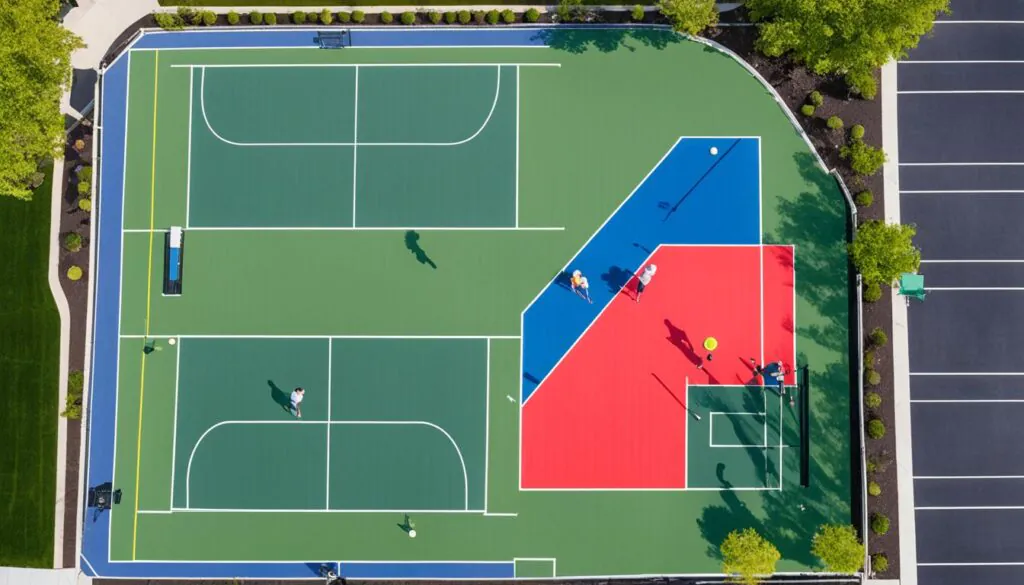
Marking and Painting the Court
Marking and painting a pickleball court is key for fun and fair play. You need good sports court paint that lasts and looks clear. The court is 20 feet wide and 44 feet long, so lines must be precise.
Choosing High-Quality Sport Paint
Good sports court paint makes the court last longer and look better. You’ll need:
- 5-Gallon Pail of PickleMaster RTU
- Textured White Line Paint for marking lines
- Stripe Rite line primer for adhesion
Paint coverage varies but is usually .09 to .11 gallons per square yard. Lines should be 2 inches wide for official play. It’s important to use reliable products for clear lines, especially on new or updated courts. The court must follow official pickleball standards.
Importance of Accurate Marking
Right marking is key for looks and fair play. Clear lines show service areas, baselines, and non-volley zones. A sealant keeps lines bright and long-lasting. To meet tournament standards, measure and mark lines carefully.
| Material | Quantity for New Court | Quantity for Resurfacing |
|---|---|---|
| Acrylic Resurfacer | 1 (5-Gallon Pail) | 2 to 3 (5-Gallon Pails) |
| PickleMaster RTU | Not Applicable | 5 (5-Gallon Pails) |
| Stripe Rite Line Primer | 1 Gallon | 1 Gallon |
| Textured White Line Paint | 1 Gallon | 1 Gallon |
Installing Nets and Accessories
Setting up a pickleball court needs careful attention to details, especially with nets and accessories. Getting the pickleball net installation right is key for good gameplay. The net should be at 36 inches high at the sides and 34 inches in the middle. Keeping the net tight and secure is important for everyone.
Regulation Heights and Installation Techniques
Choosing the right court accessories makes the court better. Make sure the net equipment is strong for lots of use and weather. A sturdy net and post system keeps the net up and in place.
Benefits of Lighting and Fencing
Adding lighting for outdoor courts is a big plus. It lets players enjoy the game at night. LED lights last a long time and make the court safe. Fencing around the court keeps balls in play and looks professional.
Putting thought into nets, accessories, lighting, and fencing makes pickleball better. Here’s a quick look at what’s important:
| Element | Description | Benefits |
|---|---|---|
| Net Installation | Regulated height (36″ sides, 34″ center) | Ensures proper gameplay and tension |
| Court Accessories | Includes benches for seating, post systems | Enhances functionality and player comfort |
| Lighting | LED lighting for evening play | Increases accessibility and safety |
| Fencing | Galvanized steel mesh around the court | Protects players and contains balls |
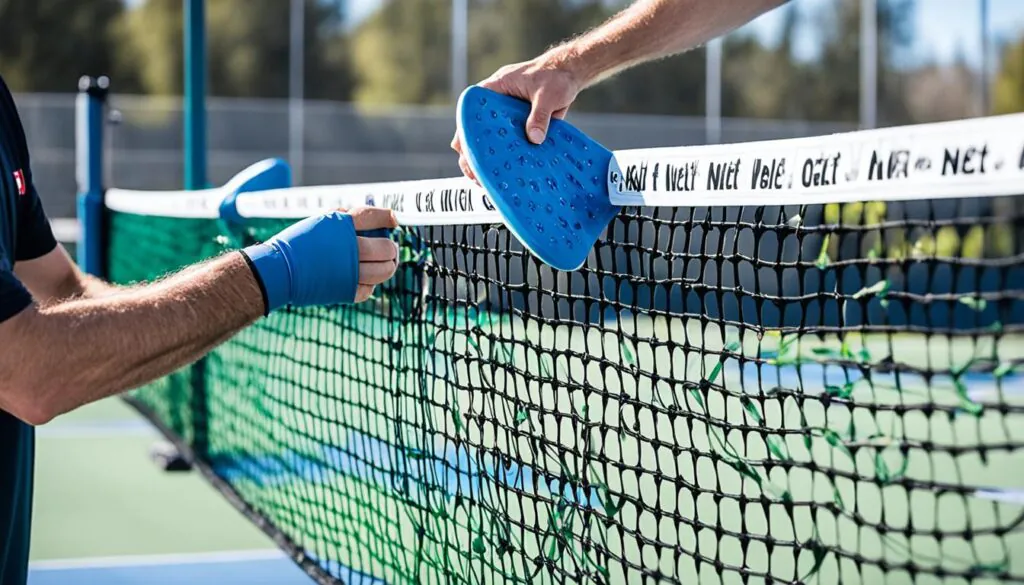
Pickleball Court Construction: Best Practices
Building a pickleball court the right way is key for its success. Planning well and using top materials helps avoid mistakes. This makes the court safe and fun for players.
Avoiding Common Mistakes During Construction
It’s important to avoid common mistakes when building a pickleball court. Some mistakes to watch out for are:
- Inadequate drainage can cause water to gather and damage the surface.
- Wrong line markings can confuse players during games.
- Not leaving enough space around the court can affect gameplay.
Following the right guidelines during construction helps avoid these mistakes. This makes the court better for everyone.
Maintaining Quality Throughout the Process
Keeping the court in good shape is key for a great playing experience. Here are some tips:
- Use 100% acrylic coatings to make the surface strong in all weather.
- Check the court often and fix any damage early.
- Resurface the court every five years to keep it in top condition.
With these steps, my pickleball court will stay safe and fun for players. Following these best practices ensures a great court that looks good and plays well.
Conclusion
This guide has shown how to make a pickleball court that’s strong and fun. Making your own court is rewarding but needs focus on details and the right materials. It’s important to know how different materials like concrete or asphalt handle the weather.
Planning your budget is key since the cost of a court changes based on size, materials, and where it’s located. You’ll need to think about the court’s size, lighting, and upkeep. Working with professional contractors can help you avoid mistakes and make sure your court is safe and fun.
Building a pickleball court is about more than just building. It’s about making a place for people to come together and have fun. With the advice from this article, anyone can start making their life better with pickleball.
